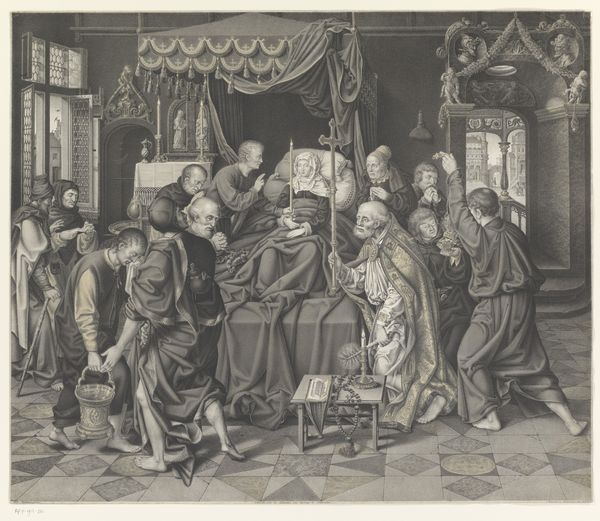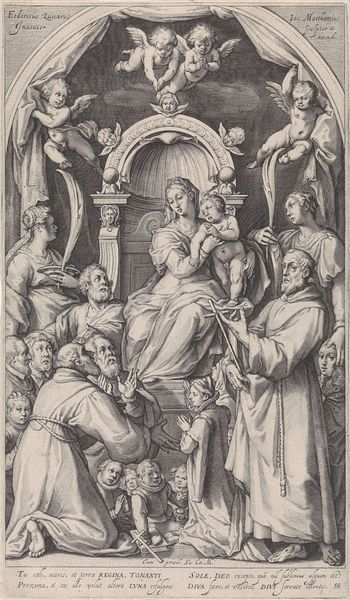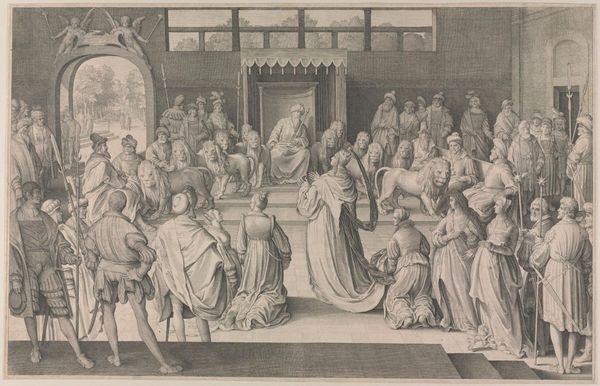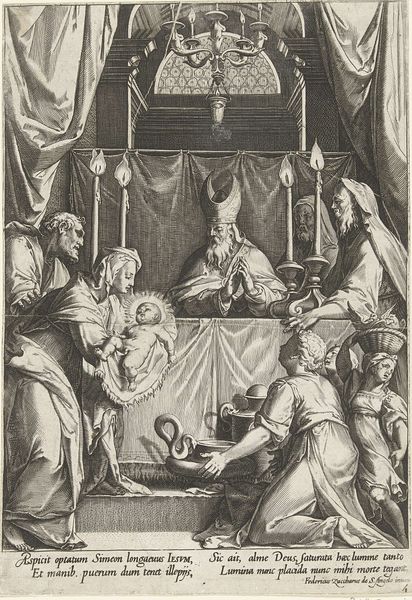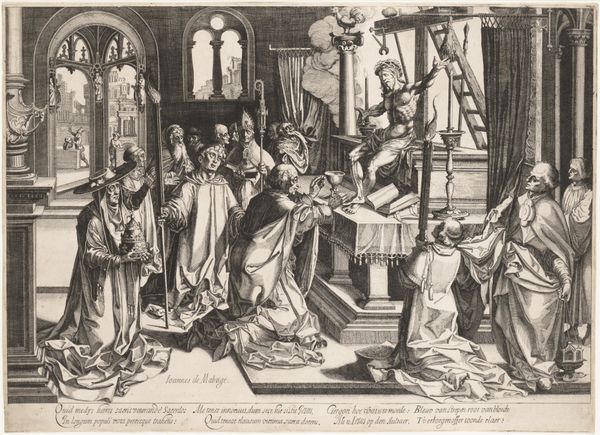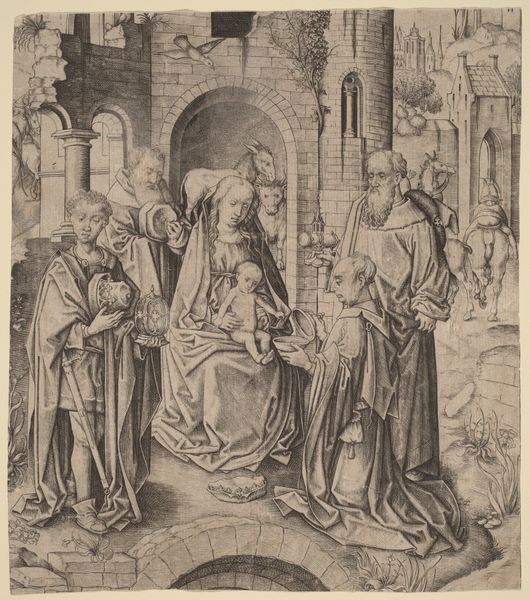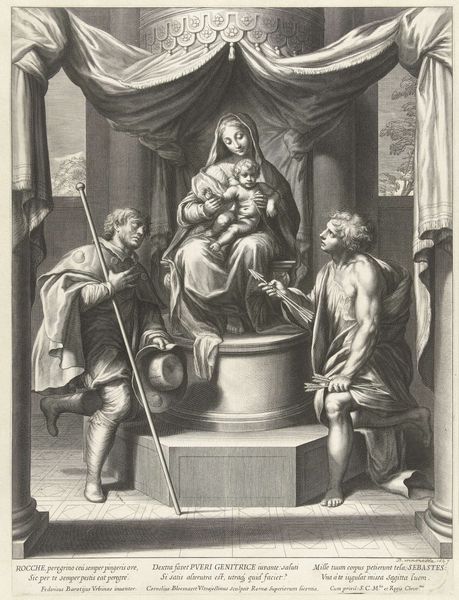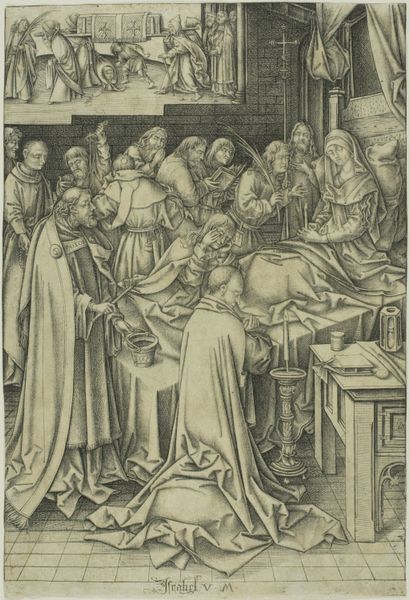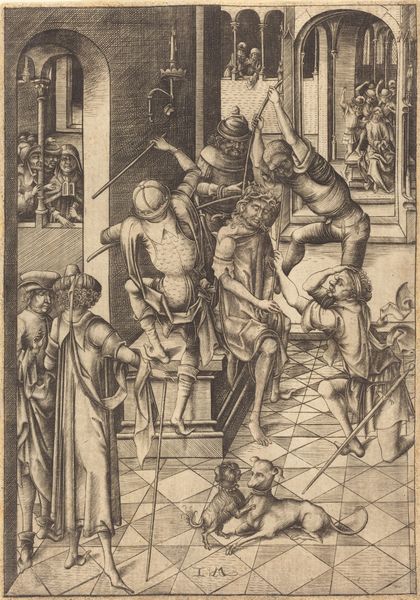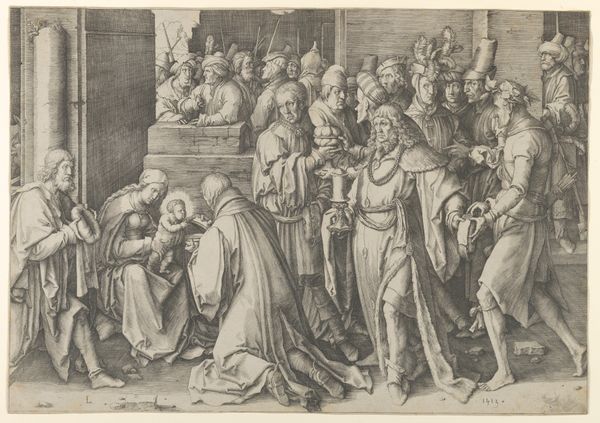
Copyright: Public Domain
Curator: Good morning. Here we have Johann Vincenz Cissarz's "View of Wismar," executed circa 1902. Editor: What strikes me immediately is the juxtaposition of austerity and opulence. The starkness of the figures’ robes, contrasted with the ornately decorated throne...it creates quite a compelling tension. Curator: Yes, Cissarz employs a precise and controlled line in his draftsmanship, doesn't he? Observe how the composition guides our gaze—from the monk holding the cross, across the central figures, to the clergyman. The implied narrative begs deconstruction. Editor: It does. But consider the historical context. Wismar, as a Hanseatic city, carried significant political and economic weight. This painting, with its religious figures seemingly endorsing secular power, speaks volumes about the Church's relationship to the prevailing power structure. Is it a straightforward depiction of piety or a commentary on vested interests? Curator: Interesting thought. The interplay of light and shadow emphasizes the central figures, placing an interpretive importance on the virgin, which reinforces this tension. Are we seeing the veneration or subordination of motherhood? Editor: I think you're right, there’s also an emphasis on her position on the throne. Look how she commands the pictorial space, which brings forth many interpretations about motherhood at the turn of the century. It almost feels as if there's a desire to immortalize not just the sacred story, but the city's civic pride itself. The art is an item to preserve social stature for a given audience. Curator: Certainly. Cissarz's choice of medium-- tempera and oil paint on what appears to be wood--further grounds the piece, doesn’t it? We have solidity but that makes way for more questioning regarding religious expression and class display in Wismar. The gothic style provides a grounding base from which all that symbolism springs forth. Editor: True, and reflecting upon how history plays a crucial role, I note how Cissarz presents Wismar not as merely a place, but as a canvas where the sacred and profane meet. Curator: It is truly stimulating how we can decipher, by dissecting lines, colors, shapes, textures, just a singular viewing of the city during this painting. Editor: Indeed, I leave this with the powerful feeling that art is always tied to politics in ways people expect and sometimes in ways they are blinded to.
Comments
No comments
Be the first to comment and join the conversation on the ultimate creative platform.
